Share
Learn how to choose the right business loan for growth with expert guidance on loan types, cash flow analysis, and repayment terms to fuel your business expansion.
Whether you’re planning to expand into a new location, upgrade equipment, boost inventory, or invest in marketing, having access to the right funding at the right time can make all the difference. With so many options available in today’s market, from term loans to lines of credit and equipment finance, it’s critical to match the loan type and terms to your specific business goals. Here’s how to evaluate your options and make the smartest financing decision for long-term business success.
Start with a goal in mind
Before you start comparing lenders or rates, you need to get clear on why you’re borrowing in the first place. Different goals will suit different types of finance.
If you’re purchasing a vehicle or machine that has a tangible lifespan, equipment finance or a chattel mortgage might be ideal. If you’re funding a short-term working capital gap, like seasonal inventory or a one-off marketing campaign, a line of credit or business overdraft may be more appropriate.
On the other hand, if you’re expanding into a second location or hiring staff to scale your operations, a business term loan with fixed repayments over 3 to 5 years could help fund that medium-term growth.
The key is aligning the loan term with the lifespan or return of what you’re investing in. Don’t use a five-year loan for a six-month project, or you’ll still be paying it off long after the benefit has passed.
Understand your cash flow
Your ability to repay the loan consistently is just as important as your business goals. Many businesses run into trouble not because they lack revenue, but because cash flow timing doesn’t match their loan obligations.
Start by reviewing your last 12 months of bank statements and financials. How stable is your cash flow? Do you have seasonal fluctuations? Can your business comfortably handle fixed repayments?
Some lenders offer flexible repayment terms, including interest-only periods or seasonal repayment options to better match your income cycles. Others may offer revolving facilities that let you draw and repay funds as needed.
Choosing the right repayment structure is essential to avoid shortfalls, particularly during slower months. If in doubt, consult your accountant for help modeling different scenarios.
Compare loan types
It’s tempting to focus only on interest rates when comparing lenders. But as with any financial product, the cheapest offer isn’t always the best.
Different loan structures come with different pros and cons. For example:
- Secured loans generally have lower rates but require an asset (like property or equipment) as collateral.
- Unsecured loans offer quicker access to cash but typically come with higher rates or shorter terms.
- Lines of credit offer flexibility but may require discipline to manage effectively.
Also consider factors like establishment fees, early repayment penalties, redraw facilities, and balloon payments. These can all affect the true cost of the loan over time.
Work with a broker
Choosing the right business loan for you and your business can be complex, especially when juggling multiple providers, structures, and repayment options. That’s where a finance broker or adviser can help. A good broker will take the time to understand your goals, assess your financials, and compare a wide range of options to match you with the right solution.
Further questions
What factors should I evaluate when comparing different business loan options?
How do I determine the right loan term for my business needs?
Why is cash flow analysis important when choosing a business loan?
What are the main differences between secured and unsecured business loans?
When should I use a finance broker for business loan selection?
This is general information only and is subject to change at any given time. Your complete financial situation will need to be assessed before acceptance of any proposal or product.





